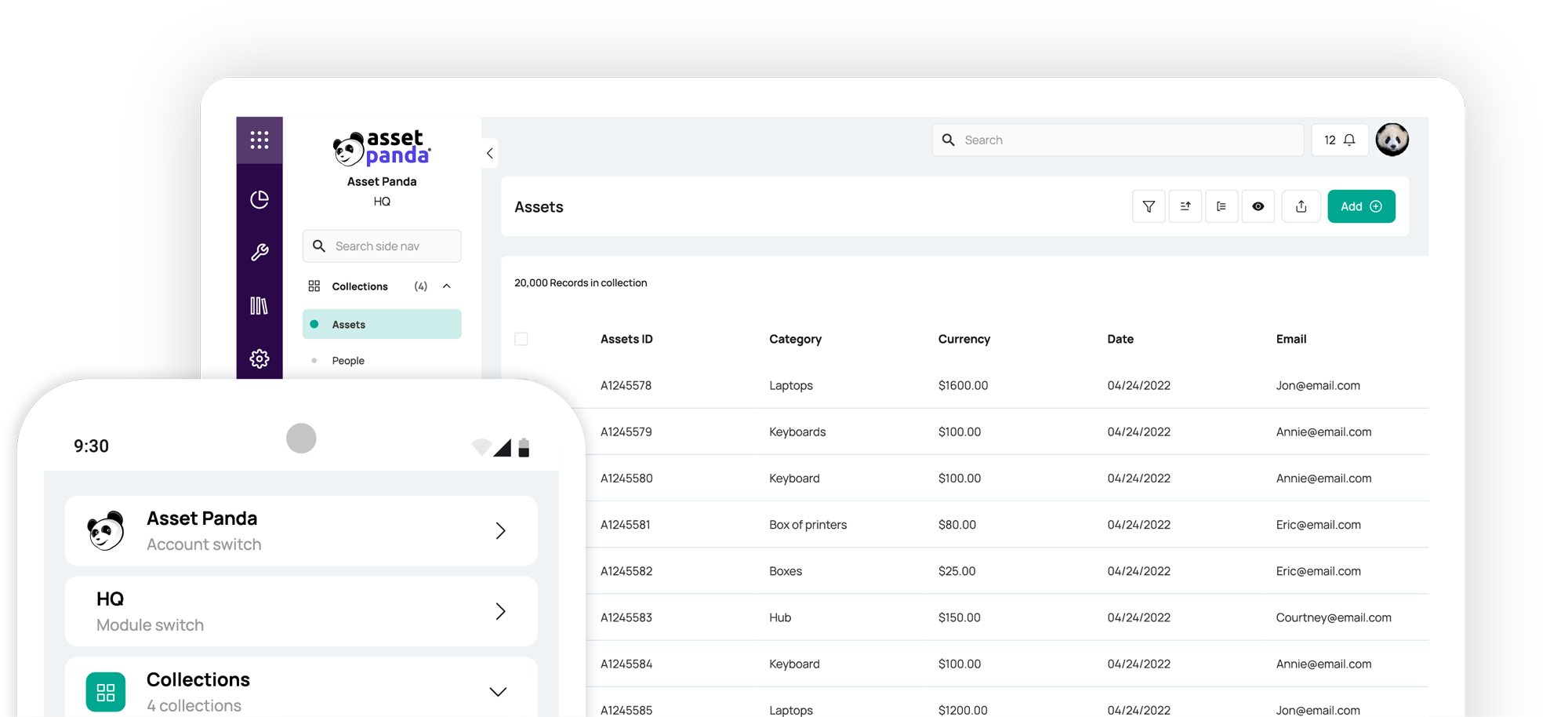What is IT Asset Disposition (ITAD)?
Blog

Table of Contents
Take Control of Your Assets
A personalized demo is just one click away.
From regular wear-and-tear to necessary technology upgrades, your organization will need to dispose of IT devices at one point or another. In order to do so safely and sustainably, you need to have a comprehensive IT asset disposition (ITAD) plan in place. So, what exactly is IT asset disposition, and how can you build an effective ITAD plan?
What is IT asset disposition (ITAD)?
IT asset disposition is the process of properly disposing of, or recycling, obsolete or unwanted IT equipment. Common examples of IT assets that require eventual disposition include desktop computers, laptops, servers, smartphones, tablets, and network gear.
Of course, it’s not as simple as throwing your items away when they’re ready to be replaced—ITAD also considers financial, information security, and environmental considerations. A good ITAD program is designed to protect sensitive data, minimize e-waste, and ensure compliance with local, state, and federal regulations when retiring IT equipment. Ideally, your ITAD plan should cover various areas, such as:
- When items should be repaired instead of replaced
- How to decommission IT equipment
- How to recycle or reuse IT devices
- How to resell or donate IT hardware
When done well, IT asset disposition can help you optimize the lifecycle of your IT assets. By effectively managing the later stages of your hardware’s lifecycle with ITAD, you’ll be more prepared to replace your assets when the time comes and may even find opportunities to repair them and prolong their lifespan.
The Importance of ITAD
Even after devices are replaced or become obsolete, what happens to them can significantly impact your organization. Simply discarding old IT gear without a plan can lead to serious problems. Here are a few key reasons why a structured ITAD program is important:
Data security
Improper disposal of IT assets can expose your company to data breaches and legal trouble. Hard drives or storage left in discarded equipment might contain confidential information that could be harvested by unauthorized parties. Strict privacy laws (like GDPR and HIPAA) and industry regulations require businesses to securely destroy sensitive data on retired hardware, and failure to do so can result in hefty penalties and lawsuits.
For example, Morgan Stanley was fined $60 million in 2020 for failing to oversee the proper decommissioning of its IT assets, leading to an inexperienced vendor exposing their customer data. A robust ITAD process with certified data sanitization ensures that your data doesn’t fall into the wrong hands and that you stay compliant with all data security mandates.
Finances
An effective ITAD program can also bring various financial benefits to your organization. When you carefully evaluate your ITAD options, you may find items that can be repaired rather than replaced, or that could be resold to another organization or individual. Lengthening the lifespan of your assets or reselling them helps your IT budget go farther.
Not to mention, proper asset lifecycle tracking and decommissioning ensures accurate and compliant financial records. Improper IT asset management and disposition methods can lead to ghost assets, or assets that are recorded on your business ledger but can’t be accounted for. If you dispose of IT assets and don’t update your financial records, for example, you could wind up overpaying taxes and having higher insurance premiums based on an inflated fixed asset count.
Environmental compliance and sustainability
Electronics contain hazardous materials, which means improperly discarded devices can harm the environment. Twenty-five states have passed e-waste laws to ensure IT equipment is safely and sustainably disposed of. Having a clear ITAD plan in place and partnering with a certified e-waste recycler helps your organization remain compliant with relevant legislation.
Whether or not you need to adhere to state e-waste laws, a good IT asset disposition program supports your sustainability efforts. Demonstrating strong sustainability practices not only helps bolster your company’s reputation but can also improve customer acquisition and retention.
5 Steps to Include in Your ITAD Plan
No matter your organization’s size or industry, there are various steps that are vital to include in your ITAD plan. As you begin the disposition planning phase, it’s important to write out a step-by-step guide to help your team properly evaluate IT assets and select the right ITAD process (e.g., repair, recycling, disposal). Along with each ITAD process, be sure to include any relevant resources, stakeholders, and chain-of-command they should be aware of.
1. Asset Repair
Before you dive into the various steps to recycle or dispose of IT assets, include a section in your ITAD plan on asset repair. This should provide tips on how to determine whether an item is worth repairing (in terms of cost and functionality) and support service information.
2. Asset Retrieval
Once you’ve addressed asset repairs, it is essential to cover how to retrieve or decommission an IT asset that needs disposal. This step helps mitigate risk and increases security by removing the device from your IT data center. But you should complete this step outside of peak hours to avoid potential disruption and then leave the device in a secure place for the next step of the ITAD process.
3. Media Cleansing
After your IT device has been decommissioned, all data within the device must be removed. Secure disposal will help you prevent unauthorized access to data if the device is reused and, in turn, help you remain compliant with relevant data privacy laws. There are 3 categories of media sanitization techniques that you can use based on your risk appetite, security classification, and your chosen disposal method.
4. Asset Disposal
After you’ve cleansed the IT asset’s data, the next step is disposal. Unless you lease your IT assets and can return them to your vendor, there are 3 options to dispose of your owned devices:
- Resell: After conducting a valuation of your decommissioned assets, you can resell them to another organization or person.
- Donate: Another option to reuse your decommissioned IT assets is donating them to schools or charities.
- Destroy: Whether a device is beyond reuse or your organization has a high-security categorization, you can also choose to destroy your IT assets. Typically, you’ll need to go through a third-party vendor that can either break down the device materials, recycle them, or shred them and throw them away.
5. Record and Report Updates
Once your IT assets have been disposed of, it’s important to update your records accordingly to maintain accurate data. For example, you’ll want to update the devices’ data center status without removing them from your asset management system for future auditing purposes. You’ll also want to ensure that software licenses or vendor contracts aren’t still linked to the devices. For your reporting, make sure the data and documentation are updated for any relevant financial, security, and sustainability reports.
A practical IT asset disposition plan is essential in helping your organization optimize the lifecycle of your IT devices and maintain compliance and data security. By following these 5 steps in your ITAD plan, your team will be prepared to effectively repair or replace IT hardware when necessary.
Take Control of Your Assets
A personalized demo is just one click away.
Related News & Press
Learn more from a solution specialist
Schedule a demo to find out how you can transform your workflows with Asset Panda Pro
Contact our team at (888) 928-6112



